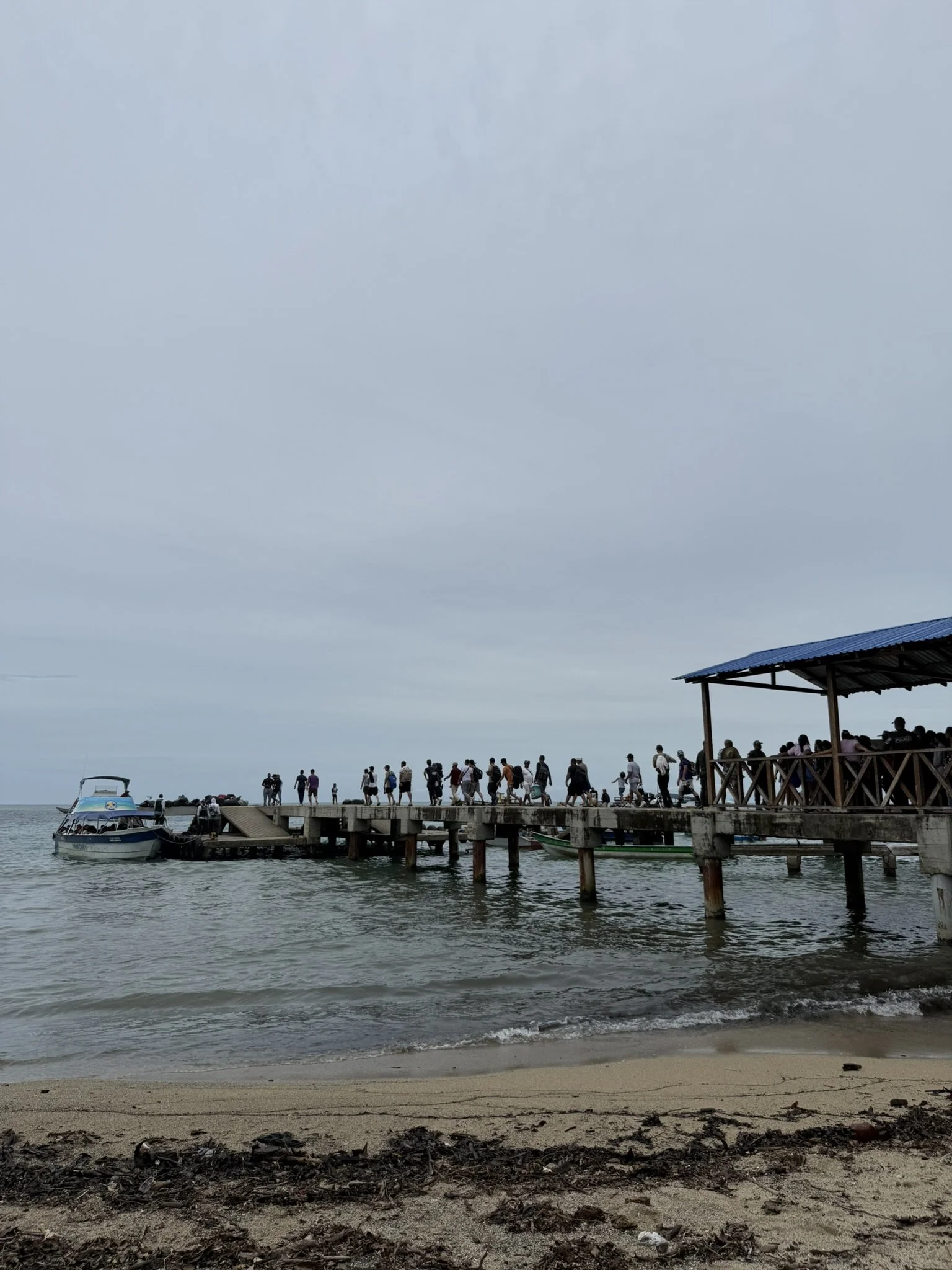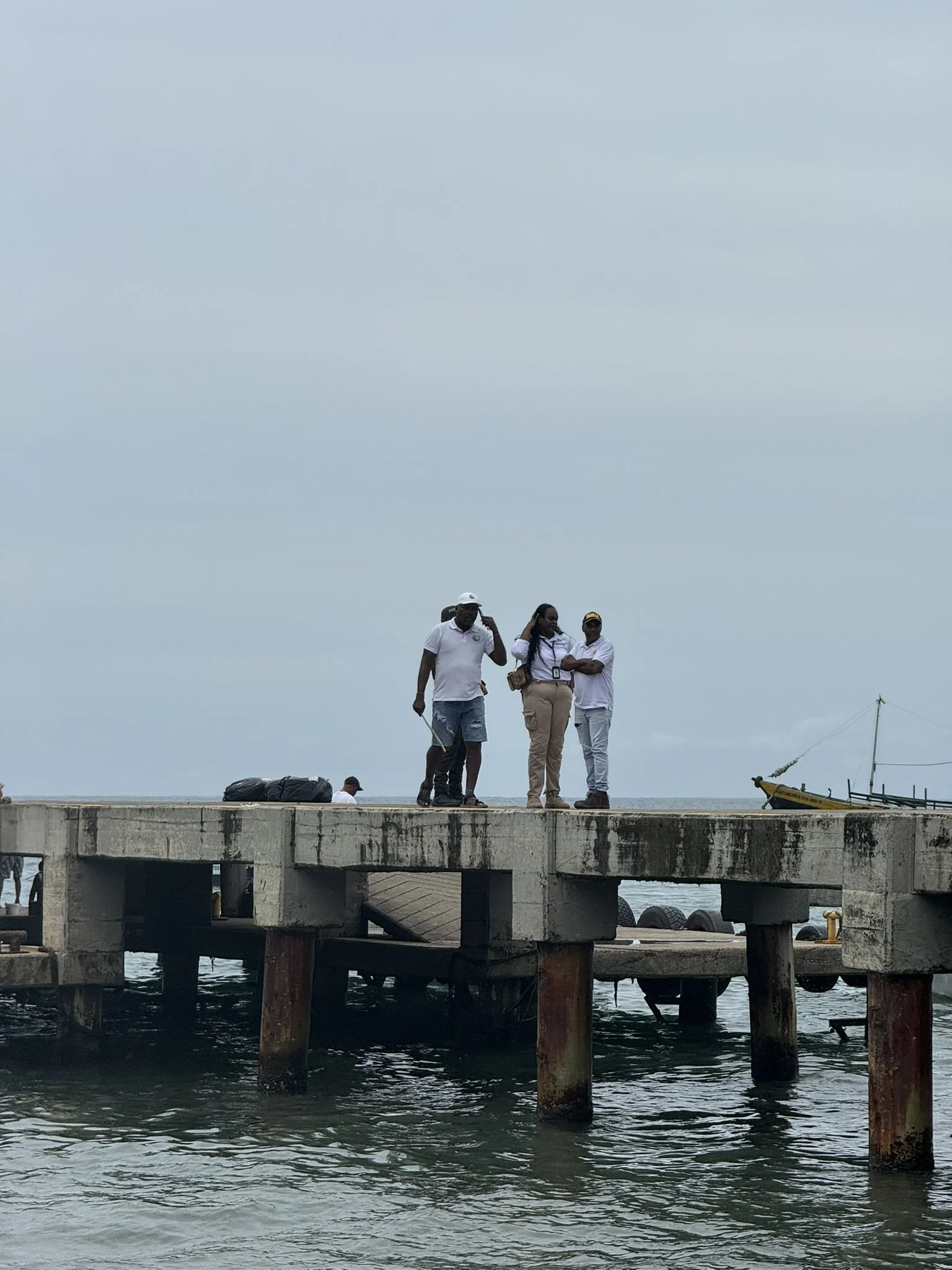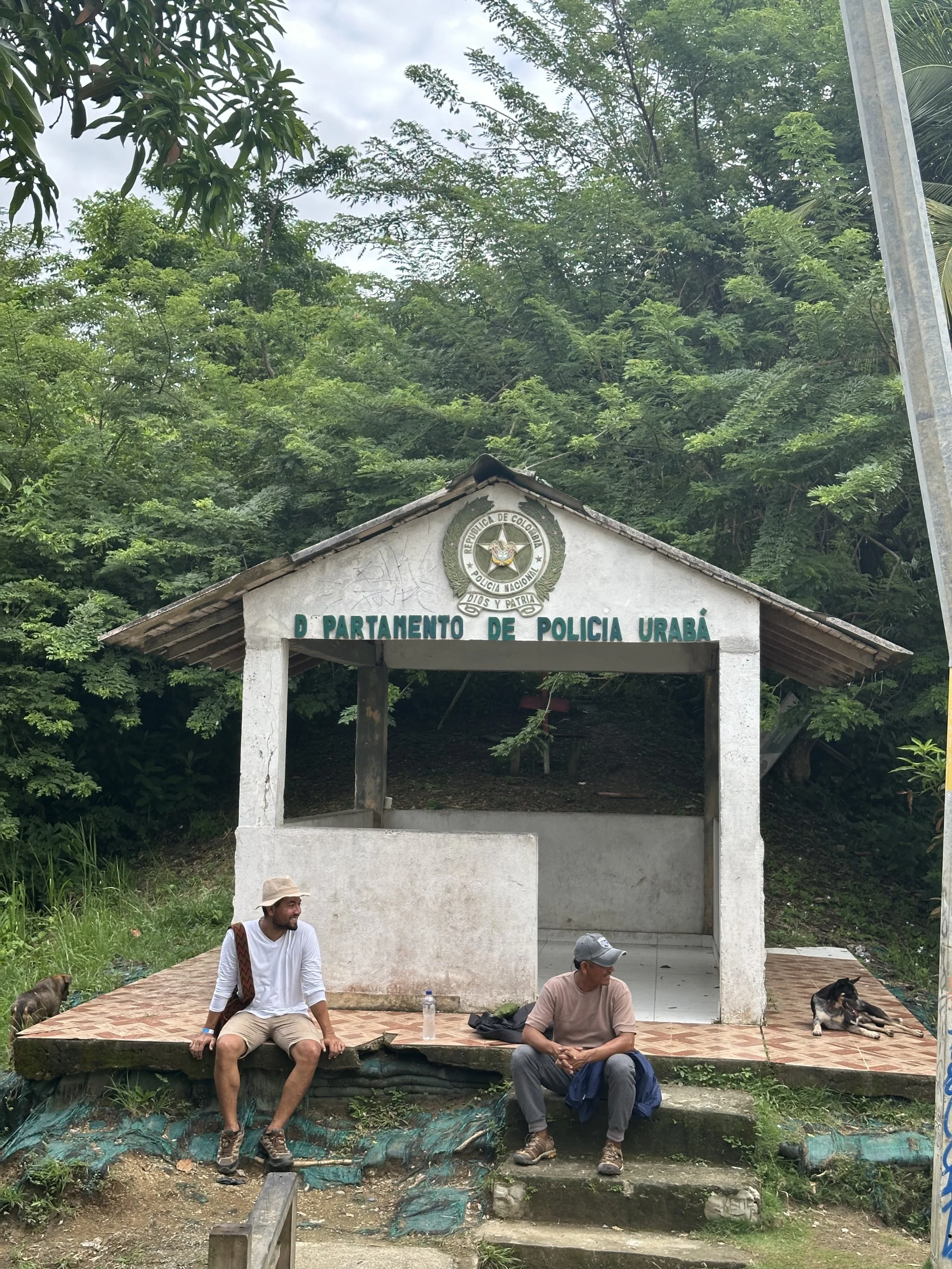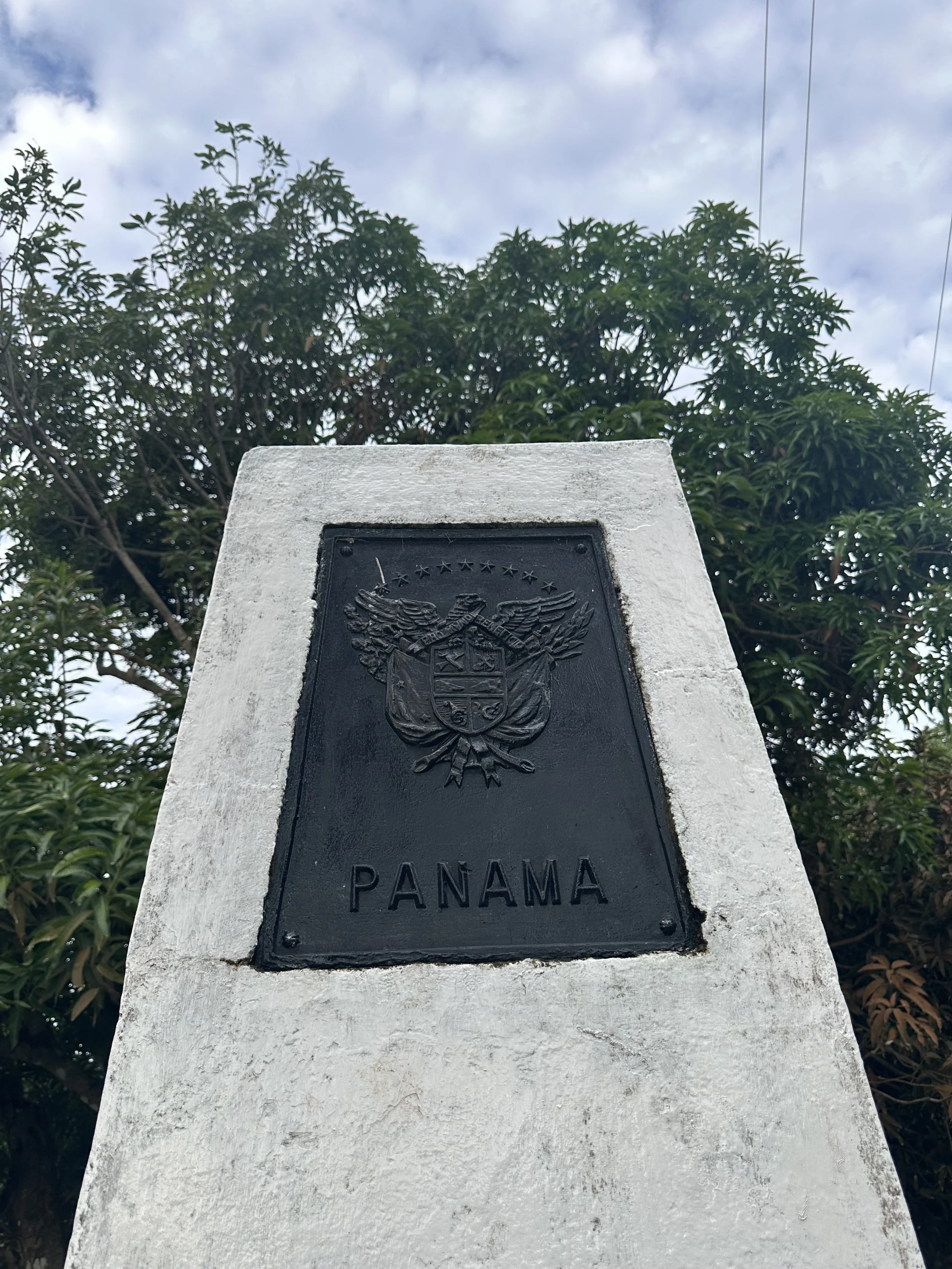
Securitization without Security:
How Migration is Shaping the Global Order
notes from the field entry #3
The “Big Brother” of Urabá
Author: Sarah Neubecker
Location: Necoclí/Capagurná, Colombia
Date: July 13, 2025

On our first day conducting field work in Necoclí, a small town on Colombia’s Gulf of Urabá, we witnessed the arrival of a lancha (a small boat equipped for 70 passengers) carrying migrants traversing south. One Venezuelan woman was so relieved to have arrived in Colombia she nearly kissed the ground. She told us that she felt safe and had peace of mind when she was on Colombian soil. Her sentiment was shared by many migrants who arrived: Colombia was a refuge and Necoclí was a safe landing pad compared to the other countries they had passed through on their way south.
When our field team traveled to Urabá, we were faced with an interesting juxtaposition: How can a place that has a reputation of being unsafe actually feel really safe? Necoclí and Capurganá, both key points on the reverse flow (flujo inverso) route, are located in Antioquia and Chocó states, which are controlled by an omnipresent force – the Autodefensas Gaitanistas de Colombia, or AGC. The AGC is a paramilitary drug-trafficking group that operates in the power vacuum created by an absent government.

In previous years, the AGC had embedded itself into the migration economy, organizing flows northward through the Darién and equipping migrants with guides. Key informants had repeatedly told us that we would feel watched and the AGC would know our every move while we conducted interviews and observations throughout town. With these warnings, I was a bit apprehensive about traveling to these rural enclaves. To me, the control of a pervasive paramilitary group did not equate to safety.

However, I quickly learned that the AGC’s organization of migrant flows and hegemonic control of the economy equated to a safer, conflict-free environment for migrants and the local community. Key informants told us that migrants were treated right here and felt safer in Colombia than in most other countries along their northward (and southward) routes. This is largely due to the AGC’s strict social code that prohibits robbery, rape, and murder. The group’s code only works to the extent that rules are followed, and dissidents are dealt with swiftly. When a a community member assaulted a migrant girl a few years ago, the perpetrator was “dealt with” by the organization.

The AGC specializes in migration, and violence is bad for business. The safer migrants felt in Urabá, the more profit could be made from their journeys. Key informants testified that violence in the Darién only occurred on the Panamanian side of the jungle, after AGC guides had dropped migrants off at the border. The sense of safety created by the AGC’s model of governance and migrant operations even led some migrants to choose to stay in Necoclí and make a life there rather than traversing the Darién.

As field researchers in Necoclí, we also experienced the safety and peace of mind generated by the control of the AGC. While some informants were hesitant to mention “the organization” in interviews, many people were open to talking. We quickly discovered that the community felt safe in Necoclí at all times of day. Even as outsiders, we could walk around with our phones out and venture outside at night with complete peace of mind. While our team felt the presence of the AGC throughout our stay—a quiet man stationed at the corner of our vision during interviews, being checked on by important community members at regular intervals and seeing cameras everywhere—we never felt unsafe.
As one key informant put it, the AGC is like a “big brother” that serves as a guardian for anyone within its borders of control, always watching and ensuring its code of conduct is followed. In ruling Urabá and controlling routes along Colombia’s northern border, the AGC has made the Darién corridor one of the safest places for migrants—and field researchers like us.
